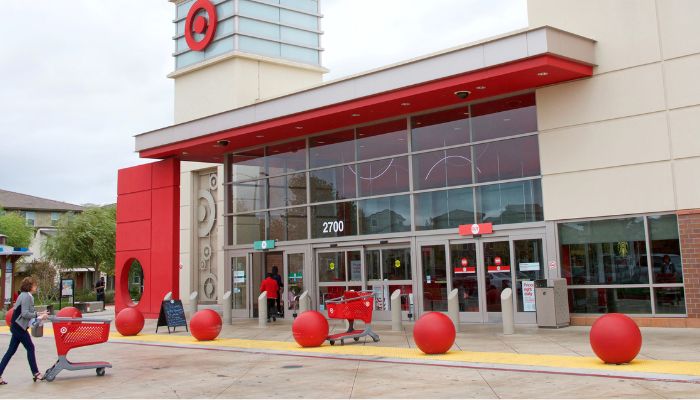The “Target Balls” have recently been under the spotlight on social media, and the theories surrounding these concrete red spheres right up Target’s doors have been flooding the feeds of thousands of users.
Although they may seem like mere decorative objects intended to complement the aesthetics of the shopping mall, these red Target balls serve a much more significant purpose than what we might initially perceive.
Target’s red balls ensure the safety of customers
These large red balls located in front of many Target stores are called bollards, and their primary function is to ensure the safety of customers and pedestrians who frequent these places.

According to the Facade Safety Council, statistics reveal a shocking fact: approximately 60 vehicle accidents in commercial buildings occur every day in the United States. Faced with this alarming reality, it is logical that retailers are willing to take preventive measures to protect their customers and their own properties.
Red bollards can prevent accidents in front of Target stores
According to the Facade Safety Council’s report of 2014, accidents in front of stores are caused mainly by pedal errors, followed by cases of driving under the influence (DUI) and operator errors.
The report suggests that having bollards installed in parking areas and store entrances can significantly prevent such incidents. These safety features can help avoid dangerous situations and ensure the safety of pedestrians and vehicles around the area.
It’s essential to note that 46% of all incidents that happen in front of stores occur in front of commercial buildings, such as retail establishments. This statistic highlights the fact that this isn’t a rare or isolated issue, but a genuine concern for all businesses that operate in commercial buildings. Hence, the installation of bollards is crucial to ensure customers’ safety and protect the stores’ assets.
How do the red balls work?
Bollards have become a crucial safety measure for stores and other commercial buildings. Their presence is a direct response to the increasing incidence of vehicle accidents involving pedestrians and commercial structures. But how do these bollards work, and what makes them so effective?
Bollards, essentially, are short and sturdy posts, typically made of concrete, steel, or other durable materials. They are strategically installed in parking areas and around the periphery of commercial buildings. Their design and placement serve a specific purpose: to prevent vehicles from directly colliding with the building structures or, even more importantly, with people nearby.
When a vehicle approaches a building dangerously, these bollards act as an effective physical barrier. In the event of a collision, they absorb the impact and deflect the vehicle, preventing serious damage to both the building and people. It’s essential to understand that while these bollards can stop moving vehicles, they are not immovable and can yield to extreme force. However, their presence remains a significant deterrent for reckless drivers.
An icon of safety for customers
The popularity of Target’s red bollards has increased considerably, largely due to their eye-catching red color and their direct association with the well-known retail chain. These bollards not only serve a crucial safety function but have also become a sort of icon symbolizing Target’s dedication to the safety of its customers and employees.
So, t we could say that the “Target red balls” or red concrete bollards are much more than mere decoration. They are a constant reminder of the importance of safety in our daily lives. These bollards help prevent serious accidents, protect commercial buildings, and ultimately save lives.
In a world where road safety and driver responsibility are important, Target’s bollards are a crucial tool in protecting people and properties.